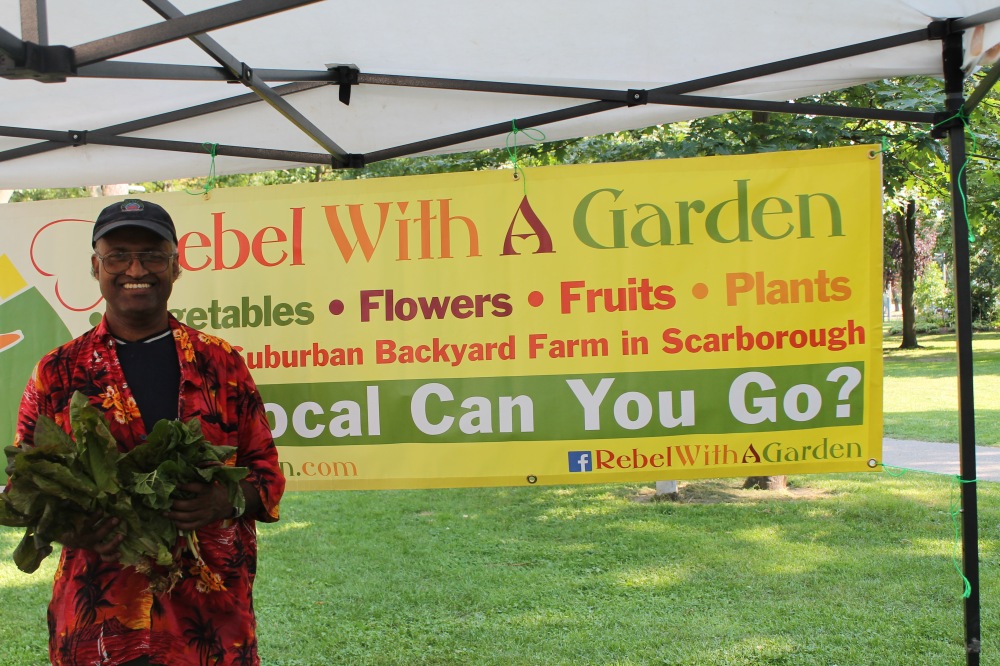George R. Ckrhushcnev is not your typical organic farmer, nor is he your typical start-up entrepreneur.
For one thing, he lives within ” a tomato’s throw”, as he puts it, of the Kennedy subway station in the heart of Scarborough, the 600,000-plus population eastern flank of Toronto.
He grows vegetables to sell in two garden plots: one is 40 feet by 40 feet in his backyard and the second is 35 feet by 40 feet in his neighbour’s yard. “I jump the fence!,” he says, with a laugh.
Ckrhushcnev grew vegetables for personal use for a couple decades and often shared excess bounty with family and friends. He worked full-time for a company that processed film, but was laid off two years ago. “Now, everything is digital,” he says, shrugging his shoulders and lifting his hands, palms up, in a “what can you do?” gesture.
He decided to try selling his produce grown in Scarborough (along with divisions from his large collection of hostas) as a way to make a living. Now, in his second year, he sells at three farmers’ markets: Riverdale Farm in Cabbagetown on Tuesdays; University of Toronto Scarborough Campus on Wednesdays; and Humber Bay Shores on Saturdays. He also participates in seed sales and exchanges across Ontario that happen before growing season.

He offers a broad selection of seasonal produce: In early July, that included a wide variety of lettuces, garlic scapes, many herbs, Swiss chard, kale, and snap peas. “I plant all kinds of things and then I just see what comes up,” he says. “We are not growing your usual suspects you can find at the supermarkets. We don’t want to compete with the supermarkets in the race down to the bottom in prices. We grow what you don’t normally see at your supermarket produce section.”
His website, Rebel With A Garden, promises that “we grow our vegetables in eco-friendly ways. We use no chemicals (and) mostly use natural pesticides like neem oil soap. We have eight rain barrels to save rain water for our farm. Our vegetables are all open-pollinated varieties to save seeds for the next year.”
Many spots in central Toronto now offer community gardens, where those whose housing does not include land can grow their own vegetables. Ckrhushcnev, however, is an interesting variation on that theme: taking advantage of larger suburban yards, often home to a lawn and swimming pool, and building a micro-farm business out of it.
It’s too early yet to judge whether direct sales of his produce will replace enough of his lost income; the work he once did no longer exists so his commercial urban farming is experiment, a start-up entrepreneurial business created at a time of life when most are coasting their last few years into retirement. As his tagline says, he’s “fighting for financial independence with a backyard garden.”
Peter Ladner, in his 2011 book The Urban Food Revolution: Changing the Way We Feed Cities, writes that “it’s conceivable that small agriculture reserves inside city limits could one day become a new civic amenity as important as parks and school grounds. In the meantime, farm spaces more likely will be carved out of underused properties in cities and suburbs … swarmed by city farmers eager to ramp up local food production.” Every city, he predicts, “is going to be looking for ways to grow more food closer to home. The reason is simple: People really want it.”
Main photo: Kelley Teahen